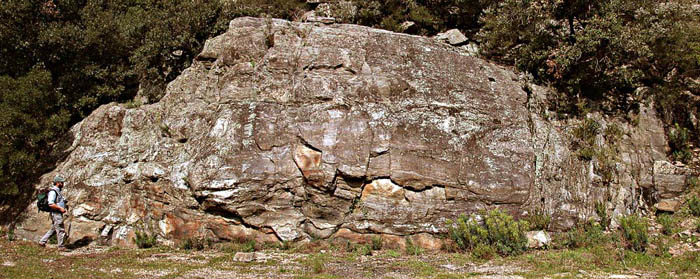|
|
|
Folds in a small abandoned quarry
At location 10 there is a small area
of flat ground which may be an abandoned quarry. On the south side
the near vertical rock face reveals a schistose rock type with clear
lineations indicating a pronounced cleavage. Most striking are the
folds which are so tight that they have limbs on opposite sides
of the fold which are parallel (isoclinal folds). The orientation
of the folds are such that the hinge trends (direction as seen from
above in plan view) N20E and a plunge (tilt downwards) of 45 degrees.
On the north side of the quarry, some 20m away the rocks are also
folded with open folds (0-30 degrees between limbs). These folds
are likely to be a response to high compressional stress (squeezing
force) resulting in shortening strain (movement) so that the layers
of the rock are crumpled.
|
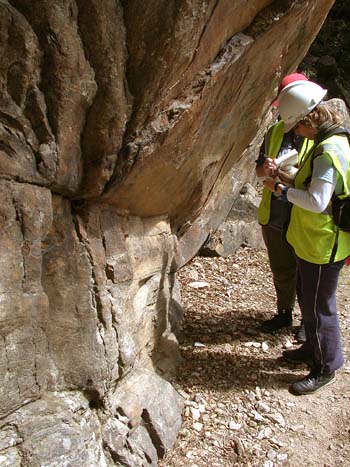
|
| Geology students sketching. |
| |
| The metamorphic grade is variable
with low-grade on the north (the open folds) and higher grade schists
on the south side (the isoclinal folds). The difference between the
fold types may be due to the likely difference in ductility between
the rock types with schist having a high ductility due to the high
proportion of the slippery platy crystals of muscovite (a type of
mica). This is also an example of the variability of the metamorphic
grades with strain shadows likely. |
| |
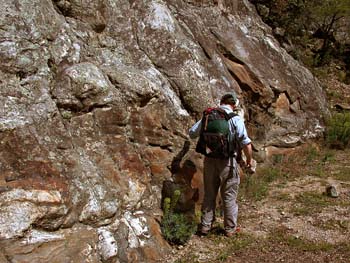
|
| The folds on each side of the
quarry are at different angles shapes and are of different shapes. |
| |
|
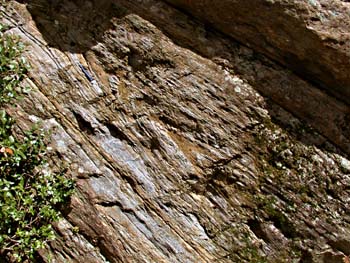 |
| These folds are so tight that
they have opposite limbs which are parallel. |
| |
|
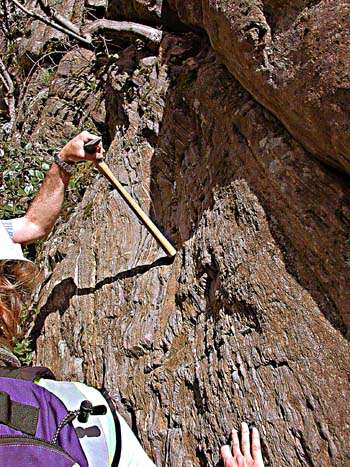 The
hammer is being held at the angle of the hinge of the fold angle. The
hammer is being held at the angle of the hinge of the fold angle.
|
| |
| |
| |
The end of our tour
Here the flat ground is inviting us to sit
down, have a rest and maybe a picnic, so treat yourself to some refreshments.
You can ponder on our journey back in time and underground and to the
many changes in the rocks we have witnessed. Maybe we understand a little
more about what happens when rocks become buried and metamorphosed.
I hope you have enjoyed our journey and that we
might meet again.
|

